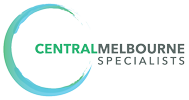Abstract
Background: Pityriasis lichenoides (PL) is a skin disease that affects both children and adults. Anecdotally, it is said to run a more benign course in children, with a frequent tendency to self-resolution. However, to our knowledge, there have been no published studies comparing PL in both age groups.
Objective: To evaluate the clinicopathological features, overall efficacy of treatments and disease outcomes in children and adults diagnosed with PL.
Methods: A retrospective review of records was undertaken on all patients diagnosed with PL at two regional centres during an 8-year period (from 1998 to 2006). For each individual, data were collected on age, sex, number of lesions, lesional morphology and distribution, symptoms, histopathological features, treatment modalities (and response), overall follow-up and length of remission.
Results: We recorded 25 children (median age 8 years, range 2-18) and 32 adults (median age 40 years, range 20-65) with PL. All the children and adults had more than 20 scaly, papular lesions. Children had greater lesional body involvement than adults. Lesions on the legs and trunk were present in 23 children (92%) compared with 19 adults (59%) (P < 0.01) and facial involvement was observed more commonly in children (n = 10, 40%) compared with adults (n = 8, 25%). Dyspigmentation was significantly more common in children (n = 18, 72%) compared with adults (n = 6, 19%) (P < 0.001). Topical corticosteroids were used by 16 children (64%) and 18 adults (56%) but only half in each group found these effective. Eight children (32%) were treated with erythromycin, with only two (25%) clearing, and one of these subsequently relapsing. In contrast, four adults (13%) received antibiotics, with three (75%) clearing and none relapsing thereafter. Ultraviolet B phototherapy was used in eight children (32%), with seven (88%) completely or almost clearing, but four (57%) subsequently relapsed. Fourteen adults (44%) received phototherapy; 10 (71%) completely cleared and only two of these (20%) subsequently relapsed. Strikingly, after a median disease duration of 30 months, only five children (20%) went into complete remission compared with 25 adults (78%) (P < 0.001).
Conclusions: This is the first study to compare PL in children and adults. Our findings suggest that, compared with adults, PL in children is more likely to run an unremitting course, with greater lesional distribution, more dyspigmentation and a poorer response to conventional treatment modalities.
Learn more: https://pubmed.ncbi.nlm.nih.gov/17854375/
